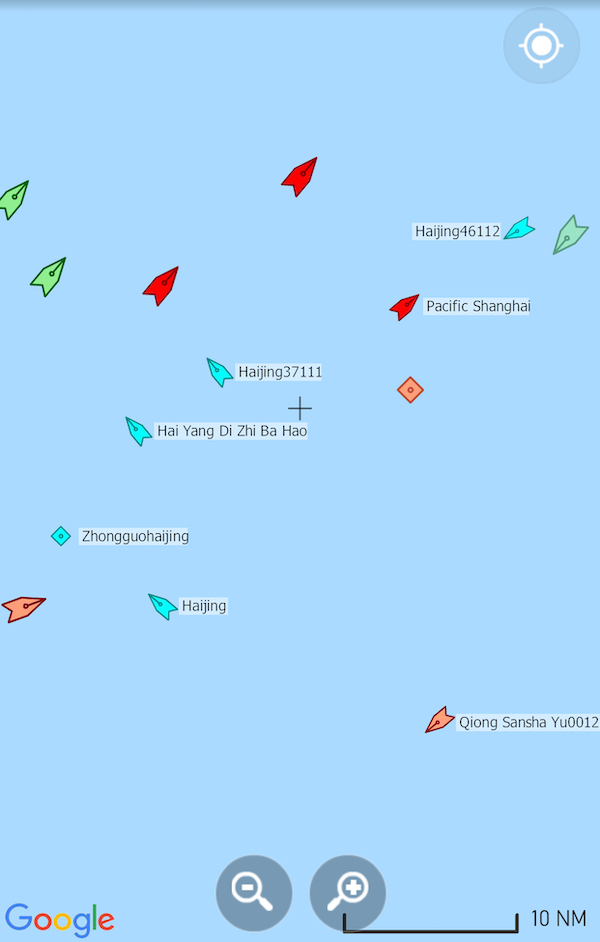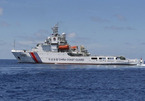China’s conspiracy
The use of marine militia is an important part of the grey zone strategy, which is the key to help China control the field in the East Sea.

‘Grey zone’ is a strategy often used by big countries with powerful resources to gain targeted benefits without having to use force in a large and direct way.
There are two typical characteristics of the strategy.
First, they do not let conflicts go beyond a threshold. They control conflict at a moderate level, trying to both put pressure on opponents, and control risks in the field in an acceptable way.
Second, they take small steps. China thinks that if it makes gradual steps forward, this will not create the risk of military reaction, but it can step by step change the situation of dispute in a way which brings benefits to it. Eventually, territorial disputes cannot be resolved overnight. For China, the longer it lasts, the better it is.
| The use of marine militia is an important part of the grey zone strategy, which is the key to help China control the field in the East Sea. |
The Chinese maritime militia is built as a separate branch of the armed forces. China’s 2013 National Defence White Paper pointed out that the militia is the supporting and substitute force for the army.
The marine militia has several basic tasks: (1) protecting sovereignty; (2) conducting reconnaissance patrols; (3) coordinating with marine law enforcement forces; (4) participating in rescue operations and (5) supporting fighting.
China has made heavy investment in a marine militia. The marine militias called the Sansha are professional forces and play an important role in the East Sea. They are equipped with appropriate personal weapons, are able to use modern ships, and are well paid.
Since early 2016, China has spent $1.5million a year to encourage fishermen to move to more permanent settlements on the islands in the context of declining fish stocks and income.
Fishermen on the islands are paid depending on the areas where they live. Each fisherman at Crescent Group, for example, receives$6.79 a day if they are present on the islands for at least 180 days a year. Those who live on Mischief Reef for 150 days a year can receive $12.07 a day.
Currently, there are six marine militia units on Hoang Sa with about 1,800 people and 100 fishing vessels. Fishermen also participate in ‘law enforcement groups’ consisting of 30 members and 5 ships.
As of June 2015, the marine militia there had conducted a total of 228 missions of providing information, casting out foreign fishing vessels, preventing foreigners from approaching the islands, and implementing the protection of the so-called ‘China's rights and interests on the sea’.
The Chinese government has established on Vietnam's Hoang Sa Islands a fleet of fishing vessels and marine militia, capable of operating offshore in the name of the government. A fisheries development company was established in February 2015. The whole company is called a big unit, while member companies or organizations are organized in companies, production teams in platoons, while each ship is a squad.
One can see that China has invested very well in the marine militia force. Since 2010, the force has been present in most notable clashes in the East Sea between China and concerned nations, from the harassment of the American Impeccable ship in 2009, to the capture of Scaborough Shoal in 2012 and the deployment of HD-981 drilling rig in 2014. And the force was also present at the conflict at Vanguard Bank.
What should Vietnam do?
While the US is still thinking about how to deal with the grey zone strategy, Vietnam is also trying to find ways to deal with the unpleasant strategy. Vietnam has successfully modernized the marine police force and is also making every effort to build up a fleet of fishing vessels capable of protecting the sovereignty.
In 2009, the National Assembly passed the Civil Defense Law, paving the way for the legalization of marine militia. Project 1902 approved in 2010 built a pilot model for marine militia, under which local young men were chosen to set up marine militia platoons.
The project says clearly that marine militia "both carries out production activities and observation", and when discovering illegal activities, it has to "coordinate with appropriate forces".
After the Chinese HD-981 deployment in 2014, the state accelerated the support of fishermen to build "modern equipment, modern technology" to be capable of both ensuring the exploitation of resources and serving the national defence activities. The Project 67 was approved.
Many fishing vessels have a shell made of wood and composites, but there are not many steel ships. As such, Vietnam has to increase the number of steel-shell vessels in the future.
The biggest difficulty in implementing Project 67 is the lack of capital. Capital is needed to build new ships, to maintain ships’ operation and to build supporting works that fit the number and quality of new vessels.
To deal with the grey zone strategy, the most effective way is to encourage fishermen to go to the sea with modern fishing vessels. At the same time, Vietnam needs to legalize the law enforcement forces which protect fishermen and implement Vietnam's sovereignty and jurisdiction rights in sovereign waters.
Nguyen The Phuong

US security advisor criticises China’s acts in East Sea
US national security advisor John Bolton on August 20 accused China of using “bullying tactics” in the increasingly tense waters of the East Sea.

Chinese activities in East Sea leading to more discontent among Vietnamese
No Vietnamese citizen can feel assured looking at the Chinese self-created nine dash line, watching Chinese activities to build an airport and military base, obstructing Vietnamese fishermen, and exploring oil in Vietnam’s territorial waters.
 Few people have paid attention to the tensions at the Tu Chinh (Vanguard) Bank – the presence of Chinese maritime militia at Hoang Sa (Paracel Islands), together with marine surveillance vessels which have worked as the main force.
Few people have paid attention to the tensions at the Tu Chinh (Vanguard) Bank – the presence of Chinese maritime militia at Hoang Sa (Paracel Islands), together with marine surveillance vessels which have worked as the main force.